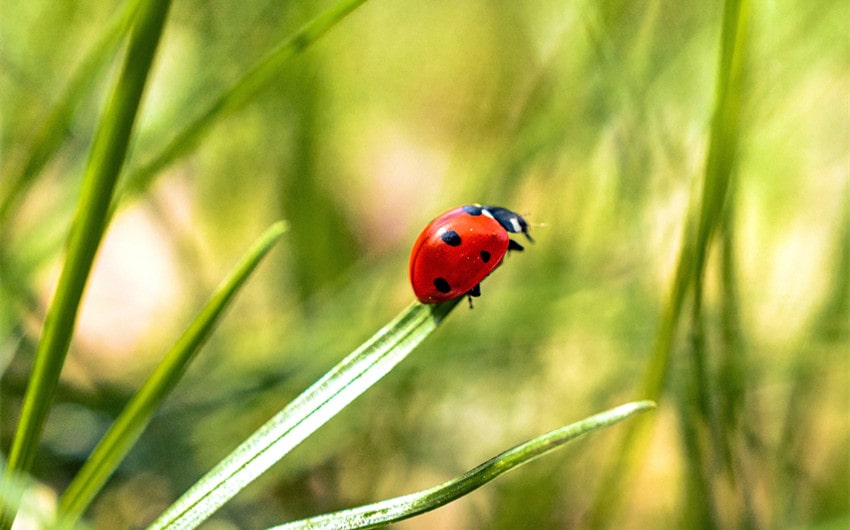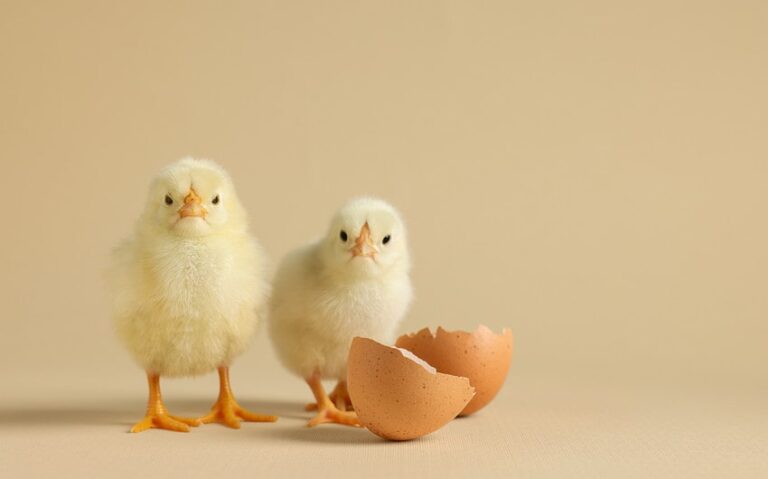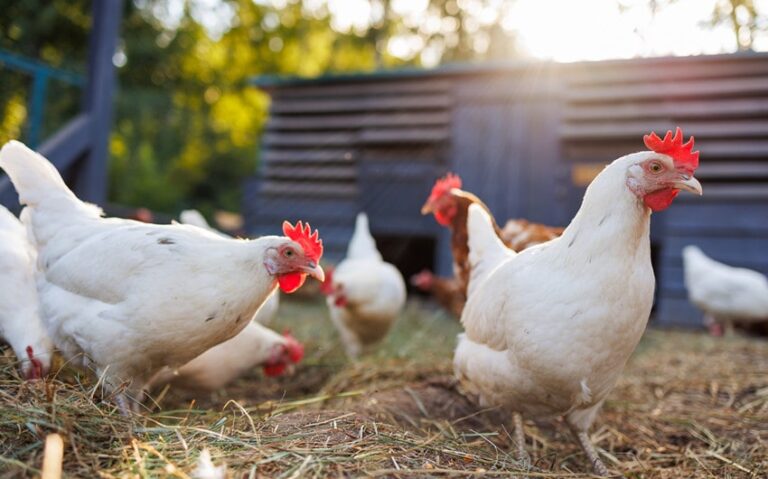Are Ladybugs Good Luck or Just a Beautiful Insect Myth?
Ladybugs are tiny, vibrant creatures that often bring a smile when spotted. Known for their charming appearance, they’ve become symbols of positivity in many cultures. You might have heard someone say, “Don’t brush it off—it’s good luck!” But are ladybugs good luck, or is it just a delightful superstition? These little insects have been tied to stories of prosperity, protection, and love throughout history, making their presence more meaningful than meets the eye.
Whether they land on your shoulder or show up in your garden, their reputation for bringing good fortune has intrigued people for centuries. Let’s explore why!
Historical and Cultural Beliefs About Ladybugs
Ladybugs have been cherished symbols of luck and protection across various cultures for centuries. In European folklore, they were often called “Our Lady’s Beetle,” linking them to the Virgin Mary. Farmers believed ladybugs were sent from heaven to protect their crops, as these insects feed on pests like aphids. The connection to divine intervention strengthened their reputation as harbingers of good fortune.
In medieval times, spotting a ladybug was considered a blessing, and it was thought that killing one would bring bad luck. These beliefs spread widely, creating a deep-rooted association between ladybugs and positive outcomes.
Beyond Europe, many other cultures regard ladybugs as lucky. In Asian traditions, they are seen as messengers of love, believed to carry messages to one’s true soulmate. In Native American symbolism, ladybugs represent harmony and balance, reflecting their role in nature as protectors of plants. The number of spots on a ladybug has also been tied to good fortune, with each spot said to represent a year of prosperity.
Across the globe, these tiny creatures have become enduring symbols of luck, protection, and even spiritual guidance, making their appearance a reason to smile and celebrate.
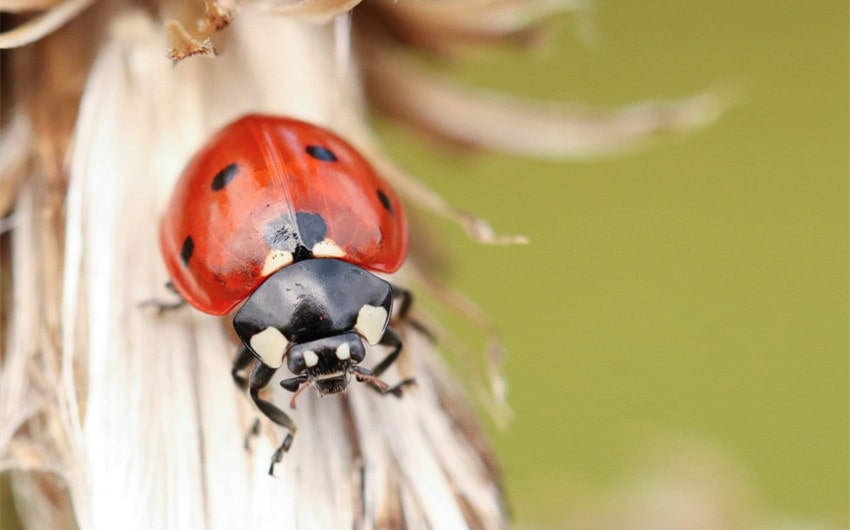
Symbolic Meanings of Ladybugs
Ladybugs have captured the imagination of people around the world, carrying a range of symbolic meanings that transcend their tiny size. From prosperity and protection to love and transformation, these little beetles are rich in symbolic significance. Let’s delve deeper into the key meanings associated with ladybugs.
1. Prosperity and Abundance
Ladybugs are widely regarded as symbols of prosperity. In agricultural communities, their presence is often seen as a sign of a bountiful harvest. This belief stems from their role as natural pest controllers, which helps crops flourish. In many cultures, the arrival of a ladybug is thought to signify upcoming wealth or success.
Whether in financial terms or personal achievements, their vibrant presence inspires hope for abundant blessings in life. Their bright red hue is often linked to vitality and growth, adding to the sense of thriving prosperity they represent. Ladybugs remind us that even the smallest creatures can bring about significant positive changes.
2. Protection and Safety
Historically, ladybugs have been associated with protection, particularly in European folklore. Farmers welcomed them as guardians of crops, believing they safeguarded plants from harmful pests. This protective symbolism extends beyond agriculture, as ladybugs are thought to bring safety and shield individuals from harm.
Spotting a ladybug is often interpreted as a sign that positive forces are watching over you, providing reassurance and a sense of security. They are also seen as omens of weather stability, with their presence hinting at favorable conditions. This protective energy aligns with their natural role in ecosystems, where they act as tiny defenders against destructive insects.
3. Love and Relationships
In some cultures, ladybugs are believed to carry messages of love. Asian traditions often view them as intermediaries between lovers, with the idea that a ladybug landing on you means your soulmate is near. Additionally, the number of spots on a ladybug is sometimes said to indicate the number of months or years until you find true love.
These romantic associations make ladybugs a charming symbol of affection and deep connection. Their fleeting presence can also signify fleeting moments of joy and attraction, encouraging people to seize opportunities for love. Many consider ladybugs a gentle reminder to remain open to emotional connections and trust in destiny’s timing.
4. Transformation and Renewal
Ladybugs are also symbols of transformation, reflecting their own life cycle from larva to adult beetle. Their metamorphosis represents growth, change, and the promise of new beginnings. When a ladybug appears, it’s often interpreted as encouragement to embrace change or trust the process of personal transformation. Their ability to adapt and thrive serves as a reminder of resilience and renewal in life.
Ladybugs also symbolize the beauty that emerges from challenging processes, inspiring hope and faith in personal growth. They encourage us to trust that every phase of life has its purpose and will ultimately lead to something greater.
5. Luck and Positivity
Perhaps the most universally recognized symbolism of ladybugs is their association with good luck. Many people believe that having a ladybug land on you or seeing one is a sign that positive things are on the horizon. This belief is bolstered by superstitions such as making a wish when a ladybug flies away. Their cheerful appearance and beneficial role in nature only reinforce their reputation as bringers of happiness and good fortune.
Ladybugs’ bright colors are seen as a metaphor for life’s brighter moments, reminding us to focus on the positive. Their sudden appearances can be seen as unexpected gifts of joy, inspiring gratitude and optimism in those who encounter them.
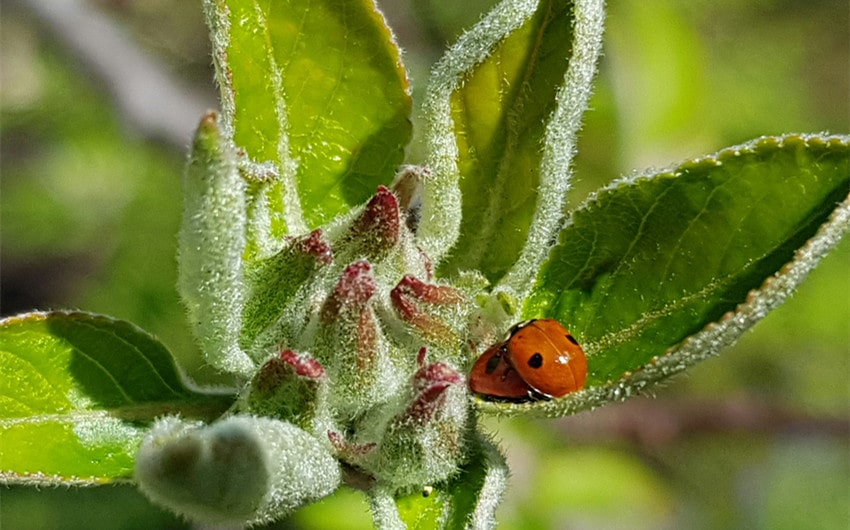
The Role of Ladybugs in Agriculture
Ladybugs play a crucial role in agriculture, earning them a reputation as nature’s pest controllers. These tiny beetles are voracious predators of aphids, mites, and other harmful pests that damage crops and plants. Farmers and gardeners often view ladybugs as a natural solution to protect their fields and gardens without the use of harmful pesticides.
A single ladybug can eat up to 50 aphids in a day, making them an invaluable ally in maintaining healthy plants and ensuring a thriving harvest. Their ability to control pest populations contributes directly to crop yield and quality, enhancing their symbolic association with prosperity.
In addition to aphids, ladybugs feed on soft-bodied pests like scale insects and whiteflies, which can wreak havoc on a wide variety of crops. This makes them highly versatile helpers in agriculture, effective in diverse environments and climates. Ladybugs are particularly beneficial in organic farming, where natural pest control methods are prioritized.
Farmers often release ladybugs into their fields as a sustainable way to protect plants, fostering a balanced ecosystem. Their vibrant presence not only reduces the need for chemical interventions but also promotes biodiversity, making them both environmentally friendly and economically valuable.
Ladybugs’ agricultural benefits extend beyond pest control. By helping plants thrive, they indirectly support pollinators like bees, which are essential for fruit and seed production. Their presence creates a healthier and more balanced ecosystem, where plants, pollinators, and farmers all benefit. This practical role in agriculture reinforces the belief that ladybugs bring good luck, as they symbolize the health, abundance, and harmony that come with a well-tended environment.
Whether in small gardens or vast farmlands, ladybugs are a vital component of sustainable agriculture, proving that even the smallest creatures can have a significant impact on the world around them.
Scientific Perspective on Ladybugs and Luck
While ladybugs are universally celebrated for their symbolism and cultural significance, science offers a more grounded perspective on their association with good luck. From an ecological standpoint, ladybugs are incredibly beneficial insects, contributing to the health of ecosystems and agriculture. Their practical contributions may have shaped their reputation as lucky creatures, as their presence often correlates with positive outcomes like healthy plants and thriving crops.
1. Natural Pest Control and Agricultural Benefits
Ladybugs are known as voracious predators of aphids, scale insects, and other pests that damage plants and crops. A single ladybug can consume up to 5,000 pests in its lifetime, making them vital allies for farmers and gardeners. This natural pest control reduces the need for chemical pesticides, which benefits the environment and ensures healthier crops.
Historically, when farmers noticed an increase in ladybug populations, it often coincided with improved harvests, reinforcing their connection to luck and prosperity. In this sense, their role in ecological balance provides a scientifically valid reason for their “lucky” reputation.
2. Contribution to Ecosystem Health
Ladybugs play a crucial role in maintaining the health of ecosystems. By controlling pest populations, they help prevent overgrowth of harmful insects that can disrupt the food chain. Their presence ensures that plants thrive, which in turn supports pollinators like bees and butterflies, creating a ripple effect of ecological benefits.
The balance they bring to ecosystems can be seen as a form of “luck,” as their presence often signals a healthy and harmonious environment. This ecological harmony further enhances their status as symbols of positivity and fortune.
3. Bright Colors as a Warning and Attractor
The bright red and black coloration of ladybugs, scientifically known as aposematic coloring, serves as a warning to predators that they are unpalatable or toxic. This defense mechanism allows ladybugs to survive and thrive in their environments, ensuring their continued ecological contributions.
Their vivid appearance not only deters predators but also attracts humans, who are naturally drawn to their cheerful look. This visual appeal may have subconsciously influenced the belief that ladybugs are good luck, as their appearance brings joy and optimism to those who encounter them.
4. Indicators of Biodiversity
Ladybugs are often seen as indicators of a healthy and biodiverse environment. Their presence suggests that the local ecosystem has the resources to support beneficial insects, which in turn promotes the well-being of plants and other wildlife.
In scientific terms, biodiversity is a marker of ecological stability, and ladybugs are a visible sign of this balance. The positive outcomes associated with their presence—such as healthy crops and flourishing gardens—might have reinforced the belief that they bring good fortune.
5. Psychological Impact on Humans
From a psychological perspective, seeing a ladybug can trigger a sense of happiness and positivity due to their bright colors and gentle demeanor. This emotional response may contribute to the perception of luck, as people associate the uplifting experience of encountering a ladybug with subsequent good fortune.
Research in psychology suggests that positive emotions can influence one’s outlook and even lead to better decision-making, creating a self-fulfilling cycle of “luck” after spotting a ladybug. In this way, the perception of luck is tied not just to the insect itself but also to the human experience of encountering it.
6. The Role of Superstition in Scientific Context
While science does not directly validate the superstitions surrounding ladybugs, it acknowledges the cultural and psychological factors that shape human beliefs. The connection between ladybugs and good luck is often rooted in their practical benefits, such as pest control and ecosystem balance.
These tangible contributions likely inspired the myths and symbolism associated with them over time. In modern contexts, scientific understanding enhances rather than diminishes the appreciation of ladybugs, as their ecological importance underscores the real-world benefits they bring.

Modern Interpretations of Ladybug Symbolism
Ladybugs have seamlessly transitioned from cultural folklore to modern symbolism, maintaining their status as icons of luck, positivity, and charm. In today’s world, their vibrant colors and gentle nature make them beloved symbols across various contexts, including fashion, media, and personal belief systems. Modern interpretations have evolved to blend traditional meanings with contemporary values, ensuring that ladybugs remain as meaningful as ever.
1. Ladybugs in Popular Culture
Ladybugs are frequently featured in modern media, from children’s stories to films and television shows. They are often portrayed as symbols of innocence, kindness, and good fortune. Characters or themes associated with ladybugs tend to emphasize positivity and transformation, resonating with their cultural reputation. Their presence in art and media not only reinforces their symbolic value but also introduces these meanings to new generations, ensuring the enduring appeal of the ladybug as a cultural icon.
2. Ladybugs as Personal Talismans
In modern times, many people adopt the ladybug as a personal symbol of good luck or positivity. Jewelry, tattoos, and home décor featuring ladybugs are increasingly popular, serving as visual reminders of optimism and resilience. A ladybug charm or image might represent the wearer’s belief in the power of small blessings or their connection to nature. This personal symbolism often transcends cultural origins, making ladybugs universally appealing as tokens of hope and transformation.
3. A Symbol of Environmental Awareness
In the context of environmental movements, ladybugs have become symbols of natural balance and the importance of preserving ecosystems. Their role as natural pest controllers and indicators of biodiversity aligns with modern values of sustainability and ecological responsibility.
Many organizations use the ladybug in campaigns to promote organic farming or the reduction of pesticide use, reinforcing their association with environmental harmony. By linking ladybugs to these causes, their symbolism gains contemporary relevance beyond traditional notions of luck.
4. Ladybugs in Fashion and Design
Ladybugs have become trendy motifs in fashion and design, appearing in clothing, accessories, and even branding. Their bright red and black coloration creates an eye-catching and cheerful aesthetic, making them popular in both high fashion and everyday wear.
Designers often use ladybug imagery to evoke a sense of playfulness and positivity, connecting the wearer to the insect’s cultural symbolism. Beyond aesthetics, the inclusion of ladybugs in design reflects their deeper meanings, reminding people of transformation, luck, and joy.
5. Ladybugs in Digital and Social Media
In the digital age, ladybugs have taken on new life as symbols in social media and emojis. Their image is often used to convey messages of happiness, gratitude, or positivity in online communication. Additionally, influencers and content creators frequently use ladybug motifs to promote themes of wellness, mindfulness, and personal growth. This modern usage keeps the symbolism of ladybugs relevant and accessible, particularly to younger audiences who embrace them as icons of good vibes and inspiration.
6. A Modern Metaphor for Resilience and Growth
The ladybug’s life cycle—from egg to larva to adult beetle—serves as a powerful modern metaphor for transformation and resilience. In self-help and personal growth contexts, the ladybug often symbolizes overcoming challenges and embracing new beginnings.
Whether featured in motivational speeches, artwork, or personal affirmations, the ladybug continues to inspire people to navigate change with grace and optimism. Its ability to thrive in various environments reminds us of the importance of adaptability and perseverance in our own lives.
7. Ladybugs as Universal Symbols of Positivity
Perhaps one of the most enduring modern interpretations of the ladybug is its role as a universal symbol of positivity. Regardless of cultural background or personal beliefs, the sight of a ladybug often brings a smile and a sense of hope. In a fast-paced, often chaotic world, the ladybug serves as a small but powerful reminder to pause and appreciate life’s simple joys. This universal appeal ensures that ladybugs remain relevant symbols of luck, happiness, and the beauty of nature in modern society.
Are Ladybugs Always a Sign of Luck?
While ladybugs are often regarded as symbols of good fortune, there are circumstances where their presence may not be seen as entirely lucky. For example, when ladybugs swarm in large numbers, especially during colder months, they can become an annoyance for homeowners.
Certain species, like the Asian lady beetle, have a tendency to seek shelter indoors, clustering in homes and leaving behind an unpleasant smell or stains. In such cases, the charm of ladybugs can quickly turn into a nuisance, leading some to question their status as bringers of luck. However, these situations are rare and usually attributed to specific species, not the entire ladybug family.
Additionally, the idea of ladybugs as a universal sign of luck often depends on personal perspective and cultural context. For someone experiencing a challenging moment, the sudden appearance of a ladybug might be a comforting reminder of resilience and positivity. On the other hand, for those with entomophobia (fear of insects), even a harmless creature like a ladybug might evoke discomfort rather than joy. This highlights how the symbolism of ladybugs is not absolute but shaped by individual experiences and beliefs.
Ultimately, whether ladybugs are always considered lucky is subjective, influenced by one’s outlook and circumstances.

